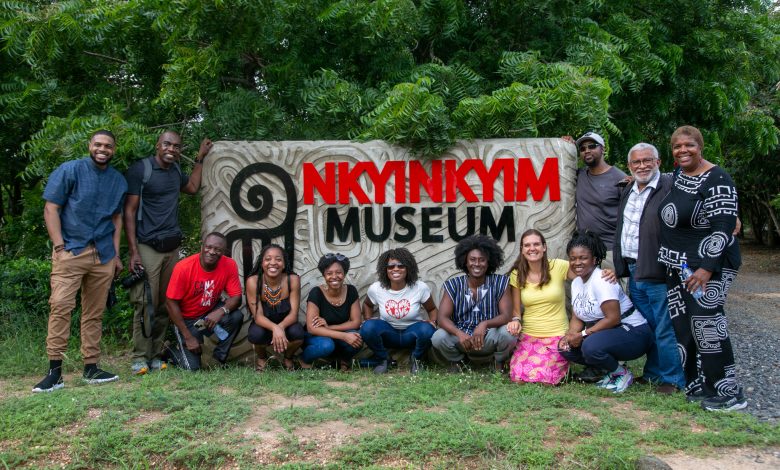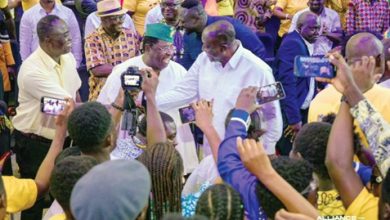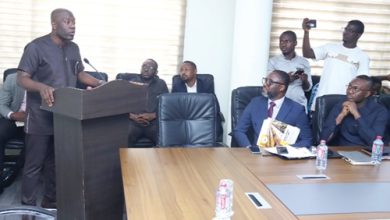Nkyinkyim Museum, a sacred experience to celebrate Black History Month

A little over 70 kilometres off the Tema-Akosombo road, about a two-hour drive from Ghana’s capital and city centre, Accra, a dusty (well, sometimes muddy, depending on the season) and bumpy road leads to the swampy mangroves of Nuhalenya, a small village in Ada Foah in the Greater Accra Region.
Hidden under the shade of baobab, bamboo and mahogany trees is an experience that can be best described as sacred.
The Nkyinkyim Museum is named after the Akan Adinkra symbol of the same name, which means “twisted and intertwined”.
“The name of the museum is inspired by Africa’s history, which is filled with many twists and turns, and our installations capture that history through creativity,” says Kwame Akoto Bamfo, who is the owner and executive director of the museum.
Once you make it over the rough road that leads to the museum, a captivating ambience captures your spirit. Three gigantic monuments greet you at the entrance.

What awaits you in the grounds of Ghana’s largest open-air museum is nothing short of a reflective and self-searching journey.
Griots and guidelines
The Nkyinkyim experience, as I call it, begins with a warm welcome from a tour guide (also griot) who greets tourists once they arrive and ushers them to a hut close to the entrance. There, the griot gives tourists a short orientation on what to do and what not to do at the museum.
The museum has many beautifully and creatively sculpted pieces of art. Using these works of art, the griot takes tourists on a journey of African stories and folklore. A tour of the museum’s workshop helps tourists appreciate the dedication, love and hard work that the passionate artists put into making the masterpieces of art on display at the museum.
Perhaps, the most significant aspect of the Nkyinkyim experience is the homage that Bamfo pays to the memory of Africans who were enslaved during the transatlantic slave trade. With an array of eerily haunting life-sized heads, about 1,500 of them sculpted from concrete and another 3,000 made with terracotta, Bamfo captures expressions of shock, pain, fear, desperation and despair that tell the story of enslaved Africans.

“This particular installation is a spiritual experience and brings to life the pain our ancestors went through, serving as a graveyard to honour their memory,” Bamfo says. Tourists are usually advised to enter this section of the museum with bare feet as a sign of respect to the ancestors, and to connect with the spirits of the land.
“The moment I stepped into the graveyard and started looking around, I saw a head that looked exactly like me,” said Lincoln, an African-American member of a homecoming group that was on tour at the museum.
“I came to Ghana to find my roots but I ended up finding myself. I found a part of me that I didn’t know much about.”
It was Lincoln’s first time of visiting Ghana.

“Sculpting is a very spiritual exercise for me,” says Nikesha Breeze, an American-born African who has been working with the museum for the past two years as a performance artist and sculptor.
“My methodology uses ancestral memory and archival resurrection to bring to the fore faces, bodies, stories and spirits that have been systematically erased from the master narrative,” she says. “Countless times we’ve had visitors crying because they come here and find sculptures that look exactly like them.”
xxxxx
Black History Month is no longer only about the past struggles of the African race but a celebration of its present struggles and achievements.
As more African Americans find their way back to the continent, using Ghana as a gateway of return, the Nkyinkyim experience is a must-have experience.
“Black pasts become reinformed by Black futures, and the resulting present is experienced as a living altar and artefact,” Breeze says.
Solomon Ter
Asaase Radio





